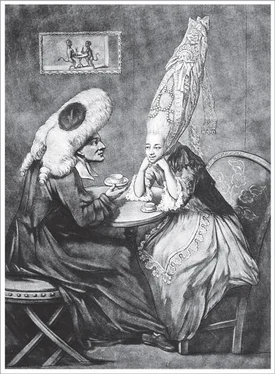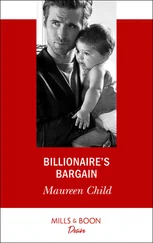Bill Bryson - At Home
Здесь есть возможность читать онлайн «Bill Bryson - At Home» весь текст электронной книги совершенно бесплатно (целиком полную версию без сокращений). В некоторых случаях можно слушать аудио, скачать через торрент в формате fb2 и присутствует краткое содержание. Жанр: Старинная литература, на английском языке. Описание произведения, (предисловие) а так же отзывы посетителей доступны на портале библиотеки ЛибКат.
- Название:At Home
- Автор:
- Жанр:
- Год:неизвестен
- ISBN:нет данных
- Рейтинг книги:4 / 5. Голосов: 1
-
Избранное:Добавить в избранное
- Отзывы:
-
Ваша оценка:
- 80
- 1
- 2
- 3
- 4
- 5
At Home: краткое содержание, описание и аннотация
Предлагаем к чтению аннотацию, описание, краткое содержание или предисловие (зависит от того, что написал сам автор книги «At Home»). Если вы не нашли необходимую информацию о книге — напишите в комментариях, мы постараемся отыскать её.
At Home — читать онлайн бесплатно полную книгу (весь текст) целиком
Ниже представлен текст книги, разбитый по страницам. Система сохранения места последней прочитанной страницы, позволяет с удобством читать онлайн бесплатно книгу «At Home», без необходимости каждый раз заново искать на чём Вы остановились. Поставьте закладку, и сможете в любой момент перейти на страницу, на которой закончили чтение.
Интервал:
Закладка:
On December 16, 1773, a group of eighty or so colonists dressed as Mohawk Indians boarded British ships in Boston Harbor, broke open 342 tea chests, and dumped the contents overboard. That sounds like a fairly moderate act of vandalism. In fact, it was a year’s supply of tea for Boston, with a value of £18,000, and so it was a grave and capital offense, and everyone involved knew so. Nobody at the time, incidentally, called it the Boston Tea Party; that name wasn’t first used until 1834.
Nor could the behavior of the crowds be characterized as one of good-natured high spirits, as we Americans rather like to think. The mood was murderously ugly. The unluckiest person in all this was a British customs agent named John Malcolm. Malcolm had recently been hauled from a house in Maine and tarred and feathered, a blisteringly painful punishment that involved the application of hot tar to bare skin. Usually, the tar was applied with stiff brushes, which were painful enough in themselves, though in at least one instance the victim was simply held by his ankles and dunked headfirst into a barrel of tar. To the coating of tar was added handfuls of feathers before the victim was paraded through the streets; often victims were beaten or even hanged.
So there was nothing at all jovial about tarring and feathering, and we can only imagine Malcolm’s dismay that December day as he was hauled wriggling from his house a second time and given another “Yankee jacket,” as it was also known. Once the tar dried, it took days of delicate picking and scrubbing to remove it. Malcolm sent a square of charred and blackened epidermis back to England with a note asking if he could please come home. His wish was granted. Meanwhile, however, America and Britain were implacably on the road to war. The first shots were fired fifteen months later. As a versifier of the day noted:
What discontents, what dire events ,
From trifling things proceed?
A little Tea, thrown in the Sea ,
Has thousands caused to bleed .
At the same time that Britain was losing its American colonies, it was facing serious problems connected to tea from the other direction as well. By 1800, tea was embedded in the British psyche as the national beverage, and imports were running at twenty-three million pounds a year. Virtually all that tea came from China. This caused a large and chronic trade imbalance. The British resolved this problem in part by selling opium produced in India to the Chinese. Opium was a very considerable business in the nineteenth century, and not just in China. British and American citizens—women in particular—took a lot of opium, too, mostly in the form of medicinal paregoric and laudanum. Imports of opium to the United States went from 24,000 pounds in 1840 to no less than 400,000 pounds in 1872, and it was women who mostly sucked it down, though quite a lot was given to children, too, as a treatment for croup. Franklin Delano Roosevelt’s grandfather Warren Delano made much of the family’s fortune by trading opium, a fact that the Roosevelt family has never exactly crowed about.
To the unending exasperation of the Chinese authorities, Britain became particularly skilled at persuading Chinese citizens to become opium addicts—university courses in the history of marketing really ought to begin with British opium sales—so much so that by 1838 Britain was selling almost five million pounds of opium to China every year. Unfortunately, this still wasn’t enough to offset the huge costs of importing tea from China. An obvious solution was to grow tea in some warm part of the expanding British Empire. The problem was that the Chinese had always been secretive about the complicated processes of turning tea leaves into a refreshing beverage, and no one outside China knew how to get an industry going. Enter a remarkable Scotsman named Robert Fortune.
For three years in the 1840s, Fortune traveled all around China, disguised as a native, collecting information on how tea was grown and processed. It was risky work: had he been caught, he would certainly have been imprisoned and could well have been executed. Although Fortune spoke none of the languages of China, he got around that problem by pretending always to come from a distant province where another dialect prevailed. In the course of his travels, he not only learned the secrets of tea production but also introduced to the West many valuable plants, among them the fan palm, the kumquat, and several varieties of azaleas and chrysanthemums.
Under Fortune’s guidance, tea cultivation was introduced to India in that curiously inevitable year 1851 with the planting of some twenty thousand seedlings and cuttings. In half a century, from a base of nothing in 1850, tea production in India rose to 140 million pounds a year.
As for the East India Company, however, its period of glory came to an abrupt and unhappy conclusion. The precipitating event, unexpectedly enough, was the introduction of a new kind of rifle, the Enfield P53, at just about the time that tea cultivation was starting. The rifle was an old-fashioned type loaded by tipping powder down the barrel. The powder came in grease-coated paper cartridges that had to be bitten open. A rumor spread among the native sepoys, as the soldiers were known, that the grease used was made from the fat of pigs and cows—a matter of profoundest horror for Muslim and Hindu soldiers alike, since the consumption of such fats, even unwittingly, would condemn them to eternal damnation.
The East India Company’s British officers handled the matter with stunning insensitivity. They court-martialed several Indian soldiers who refused to handle the new cartridges, and threatened to punish any others who didn’t fall into line. Many sepoys became convinced that it was all part of a plot to replace their own faiths with Christianity. By unfortunate coincidence, Christian missionaries had recently become active in India, fanning suspicions further. The upshot was the Sepoy Rebellion of 1857, in which the native soldiers turned on their British masters, whom they very much outnumbered. At Cawnpore, the rebels herded two hundred women and children into a hall, then hacked them to pieces. Other innocent victims, it was reported, were thrown into wells and left to drown.
When news of these cruelties reached British ears, retribution was swift and unforgiving. Rebellious Indians were tracked down and executed in ways calculated to instill terror and regret. One or two were even fired from cannons, or so it is often recorded. Untold numbers were shot or summarily hanged. The whole episode left Britain profoundly shaken. More than five hundred books appeared on the uprising in its immediate aftermath. India, it was commonly agreed, was too big a country and too big a problem to leave in the hands of a business. Control of India passed to the British crown, and the East India Company was wound up.
III
All these discoveries and all of this endless fighting made its way back to England in the form of the food that ended up on dinner tables, and in a new kind of room: the dining room. Dining room didn’t acquire its modern meaning until the late seventeenth century and didn’t become general in houses until even later. In fact, it only just made it into Samuel Johnson’s dictionary of 1755. When Thomas Jefferson put a dining room in Monticello, it was quite a dashing thing to do. Previously, meals had been served at little tables in any convenient room.
What caused dining rooms to come into being wasn’t a sudden universal urge to dine in a space exclusively dedicated to the purpose, but rather, by and large, a simple desire on the part of the mistress of the house to save her lovely new upholstered furniture from greasy desecration. Upholstered furniture, as we have lately seen, was expensive, and the last thing a proud owner wanted was to have anyone wiping fingers on it.
Читать дальшеИнтервал:
Закладка:
Похожие книги на «At Home»
Представляем Вашему вниманию похожие книги на «At Home» списком для выбора. Мы отобрали схожую по названию и смыслу литературу в надежде предоставить читателям больше вариантов отыскать новые, интересные, ещё непрочитанные произведения.
Обсуждение, отзывы о книге «At Home» и просто собственные мнения читателей. Оставьте ваши комментарии, напишите, что Вы думаете о произведении, его смысле или главных героях. Укажите что конкретно понравилось, а что нет, и почему Вы так считаете.












